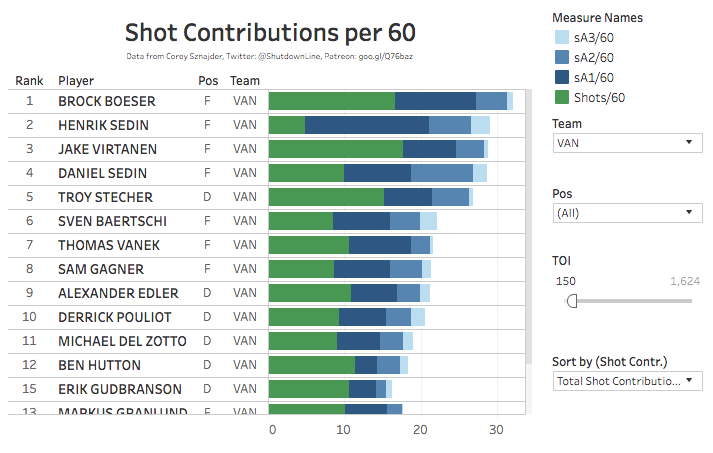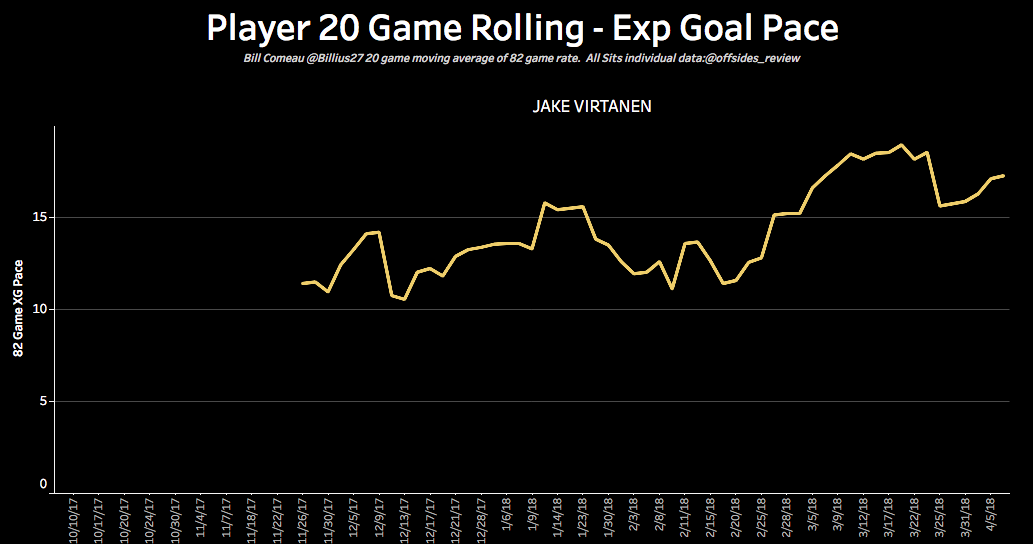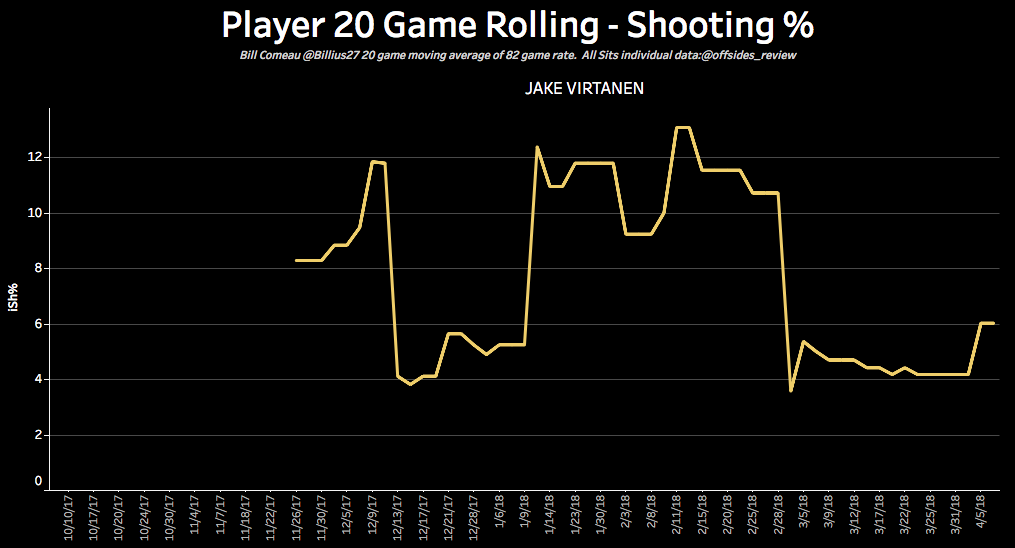CanucksArmy Year in Review: Jake Virtanen

By J.D. Burke
5 years agoIn a lot of ways, this year was a big step forward for Canucks winger Jake Virtanen. That’s hard to reconcile with given the paltry 20 points (10 goals and assists alike) Virtanen earned over the course of his 75-game season, but you have to remember where he was a year ago.
Virtanen wasn’t even in Vancouver. Then-Canucks head coach Willie Desjardins made sure of it by early-November, sending the vexing youngster to the Utica Comets after an ignominious ten game stint in which he registered a single point and looked generally lost. That’s where his season ended, with a lowly, concerning even, 19 points in 65 games.
Many started to wonder whether Virtanen would ever get his career back on track.
Expectations were adjusted accordingly. It was no longer a question of whether Virtanen could be an impactful power forward for the Canucks; it was about whether he could contribute to the Canucks period — at least in the short term.
The team itself never flinched. And in newly minted head coach Travis Green, Virtanen had perhaps his biggest believer among them for a boss — the very same coach that oversaw Virtanen’s first season in the AHL.
Green’s tough love approach to Virtanen didn’t produce immediate results in Utica, but from the moment the Canucks reunited them in training camp, it became clear that the pair had laid the groundwork for a fruitful full-time return to the NHL.
It was Virtanen though who built on that foundation to make the Canucks roster out of training camp. With six points (four goals and two assists) in two games to accompany strong two-way and transitional numbers, Virtanen made the decision an easy one for the Canucks.
The production tailed off as the stakes mounted, but Virtanen found other ways to contribute to the Canucks’ cause in the regular season. In an article I wrote for The Athletic Vancouver, I explored some of the many ways in which his speed created offensive zone time for his linemates through the first six weeks of the season — a trend that held right to the year’s conclusion.
Not only does Virtanen have a healthy ratio of controlled entries to uncontrolled (55 per cent to 45 per cent) at even strength, but he’s skating the puck into the opposition zone more frequently than he did the last time we had this data at our disposal two seasons ago. Virtanen’s bringing the puck into the offensive zone with control 19.7 times/60.
All this he has managed to accomplish in just 39 five-on-five minutes of ice. This has given him an imposing 6.02 penalties drawn per 60 minutes at 5-on-5, which is actually the fifth highest rate in the entire NHL.

The linemates, ice-time and leverage changed for Virtanen as the season carried on, but the results, underlying and boxscore alike, were almost alarmingly consistent right to the bitter end. Here’s the points breakdown for Virtanen by month: three, three, three, two, four, four, one; Virtanen had ten points before the All-Star game and ten points after it, too (albeit in differently sized game samples).
If the NHL were a just league, Virtanen’s production would’ve jumped significantly as his season progressed though. By about December, Virtanen had started to drive the net on rare occasions when the opportunity presented itself; by February, Virtanen was creating his own opportunities by bull-rushing through the opposition to create chances like a real power forward.

As you can see from the above chart, the quality and frequency of Virtanen’s shots were such that his expected goal output was trending towards a 20 goals per 82 games pace. Had his shooting percentage kept pace, that might’ve reflected in Virtanen’s goal totals.

All of this bodes well for Virtanen elevating his game from that of an every day NHL’er to perhaps a middle-six contributor in time for next season. It’s a reasonable conclusion to reach based on Virtanen’s progression through last year.
Then again, as The Province’s Jason Botchford pointed out in a late-season Provies, Virtanen’s numbers were eerily similar to those posted in his rookie season almost right across the board. In fact, the numbers Botchford referenced were all better in his rookie season save for his goals and points per hour.
The fear with Virtanen, going back to his draft, was that there were limitations to the heights he could reach based on the missing elements from his game. One scout I spoke to during his rookie season thought he was already close to his ceiling.
For all Virtanen’s physical gifts, and they are legion, the fact remains that his hockey sense now is where it was two or three years ago. There are signs that he might overcome this deficiency, but for now, that’s it. The burden is on Virtanen to convince us otherwise — colour me cautiously optimistic.
It bears mentioning, though, that we shouldn’t lose track of the qualities already present in Virtanen’s game. He’s a reliable two-way contributor, and his work in the neutral zone is masterful. Whether Virtanen ultimately reaps the rewards of his diligence or not, it’s his play that is consistently creating an environment for his team to outscore the opposition. If Virtanen can add a finisher’s touch, that’d be icing on the cake.
Recent articles from J.D. Burke





